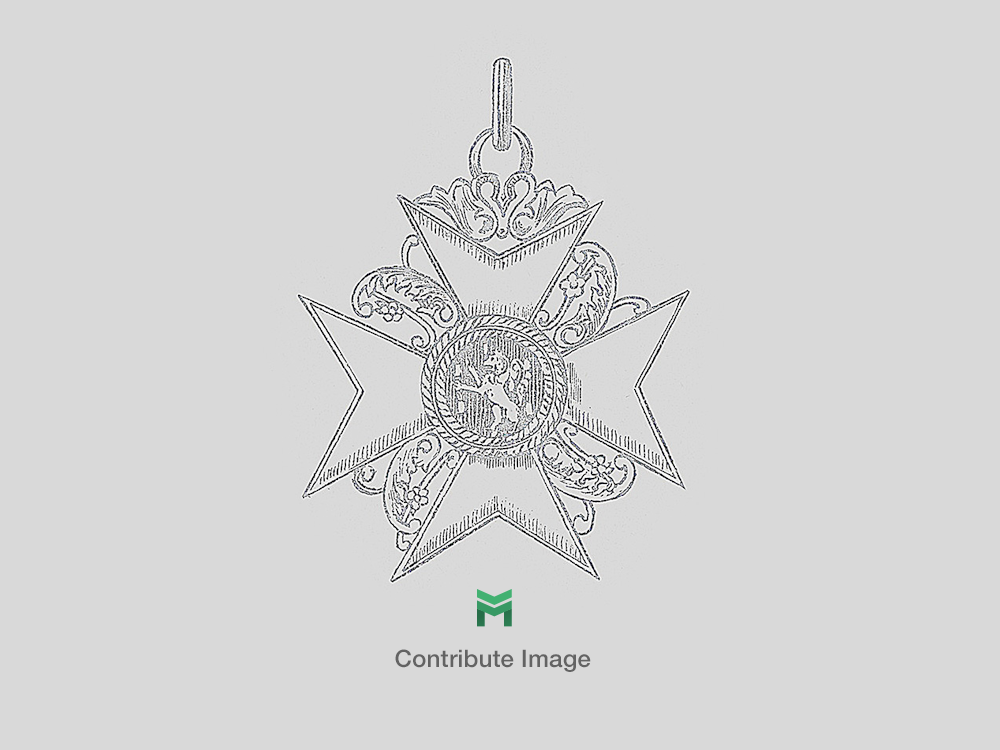Royal House Order of Hohenzollern, Civil Division, Grand Commander (with diamonds)
CATEGORY: Version
SKU: 01.PRU.0111.102.01.004
Estimated market value:

Estimated market value:
On December 5, 1841, the Hohenzollern Order was established by joint decree of Prince Konstantin of Hohenzollern-Hechingen and Prince Karl Anton of Hohenzollern-Sigmaringen. The two principalities were collateral lines of the House of Hohenzollern, and cousins to the ruling house of Prussia.
On December 7, 1849, a treaty was established which handed over the Hohenzollern principalities to the Kingdom of Prussia. Following the annexation of these two principalities, the order was adopted by the Prussian ruling house. Although the principalities were annexed, the princely lines continued to award the order as a house order, entitled the Princely House Order of Hohenzollern.
In order to distinguish between the two orders, the Prussian version was called the Royal House Order of Hohenzollern. The order’s statutes were officially adopted on the King’s birthday, October 15, 1851.
The Princely House Order of Hohenzollern and the Royal House Order of Hohenzollern co-existed and were awarded independently from each other.
The Royal House Order of Hohenzollern was primarily conferred in recognition of war merit, but if a civilian or low-ranking official demonstrated exceptional merit they could be awarded an Eagle (Adler) grade. The Eagle grades were only awarded to civilians and were never awarded with crossed swords.
The motto of the order, VOM FELS ZUM MEER, translates to “from rock to sea” and references the territorial expansion from the rocky summit of Hohenzollern to the Baltic and North Seas.
The first awards were made exclusively to individuals who fought the revolution of 1848. In the second award ceremony on October 14, 1851, the Silver Honour Cross was awarded for the first time to the king’s entourage and servants. These seven silver crosses were deemed unique until 1861, when King Wilhelm awarded more and officially created the IV Class.
The order originally featured three grades, Grand Commander, Commander, and Knight.
In 1861, several grades were added to the order, including the Grand Commander Breast Star, the Commander Breast Star, and the IV Class/Member.
In 1864, crossed swords through the centre of the cross were added as an attribute that could be conferred with all regular order grades for military and war merit.
All regular order grades could also be awarded with surmounting jubilee numbers including '50' and '60'.
A miniature version of the St. John Cross could be added to the upper cross arms of order awards, which were conferred for merit in the care of sick and wounded military personnel.
In 1881, the Star of the Grand Commander was placed above the star of the Grand Cross from the Order of the Red Eagle.
In 1917, The Grand Commander could receive swords, and therefore the Grand Commander’s Cross could be worn as a decoration around the neck unless it was worn on the chain.
The Royal House Order of Hohenzollern was awarded 8,300 times during the First World War.
The Grand Commander was awarded to 81 people. Examples are known where the date does not feature a period sign. Versions before 1916 are composed of gold.
The Grand Commander with the jubilee number ‘50’ was awarded to Oskar von Lindequist, General Colonel and Adjutant General of the Emperor and King, Wilhelm II.

Comments
Sign in to comment and reply.


Scroll Top